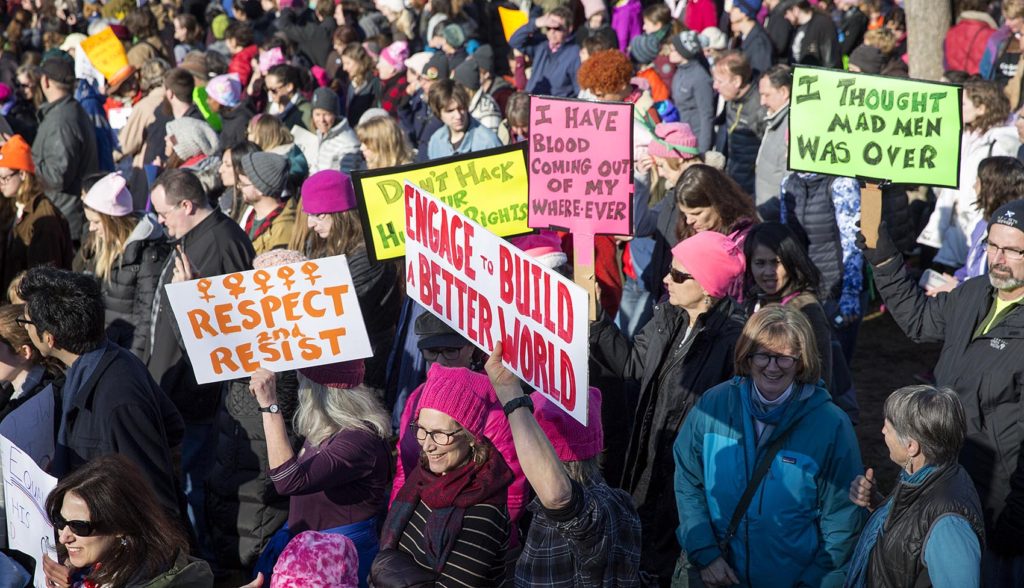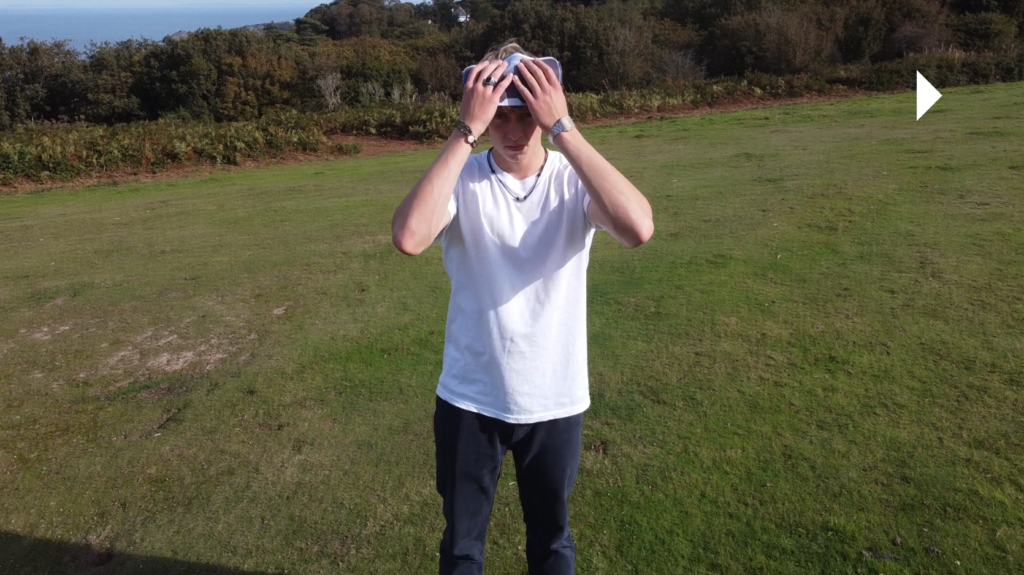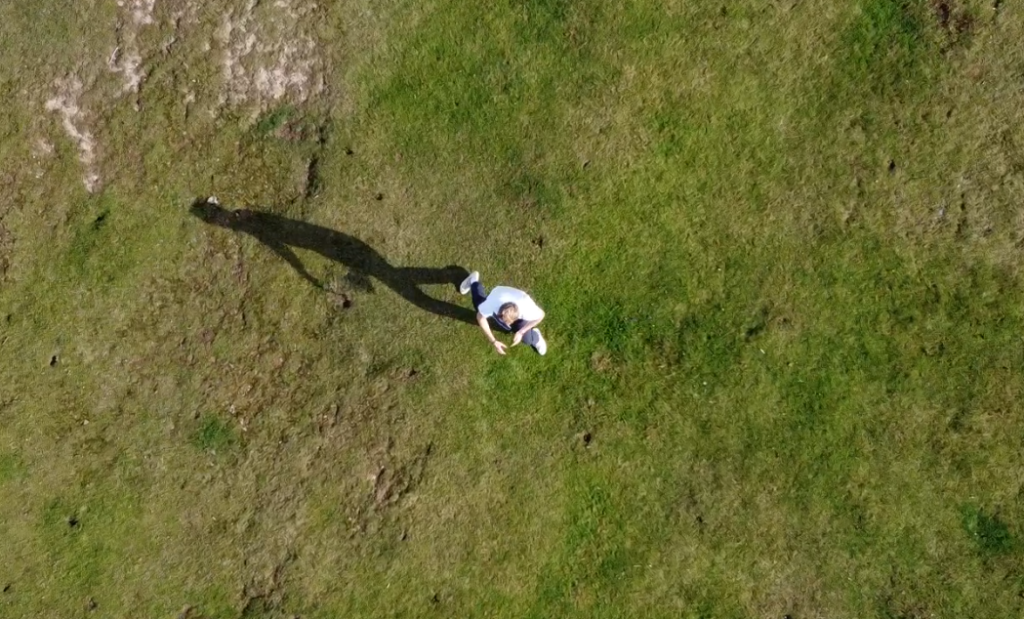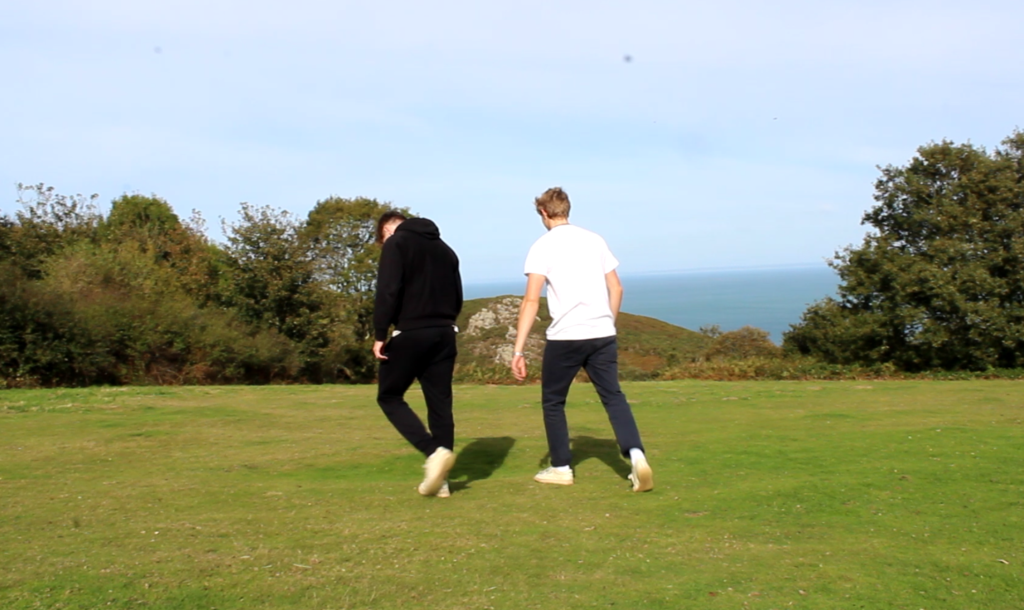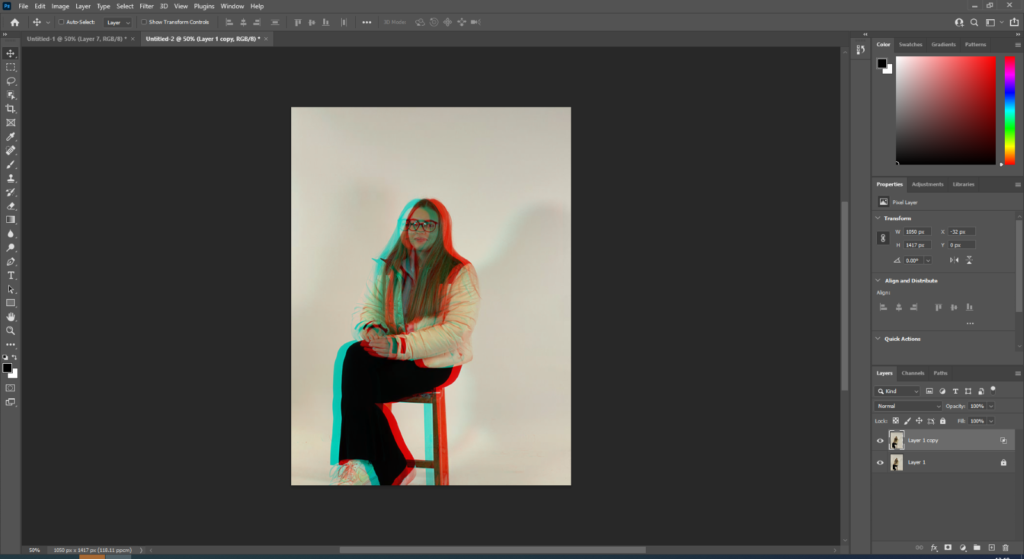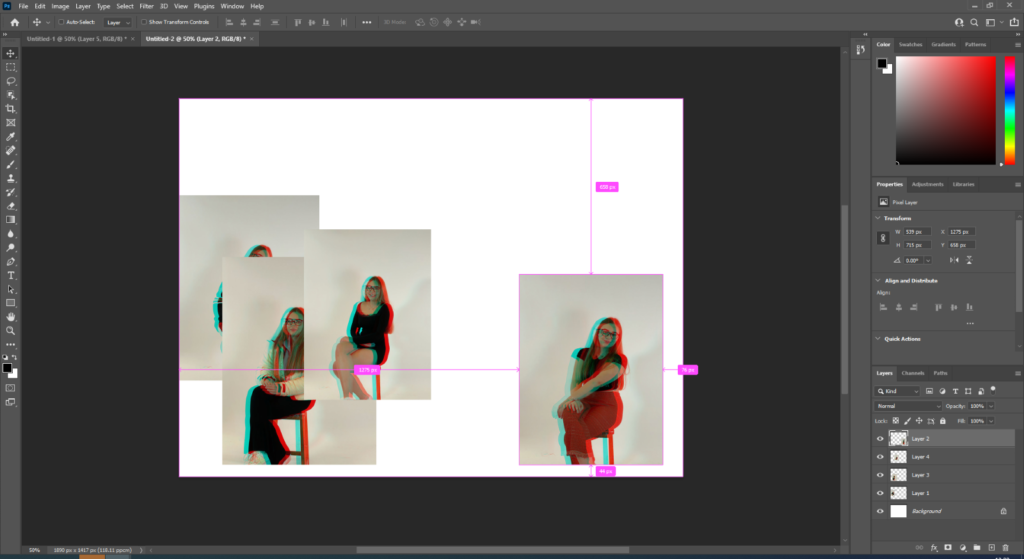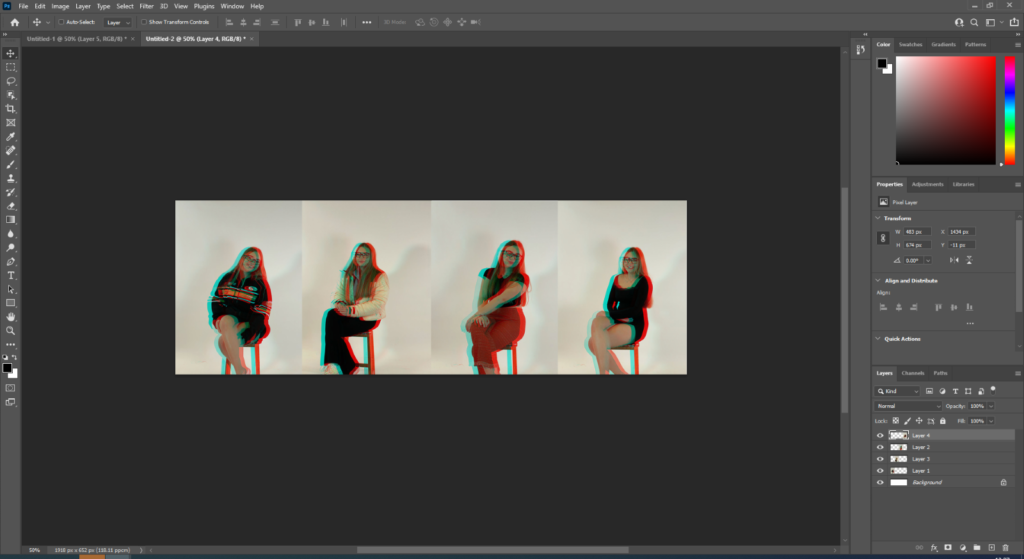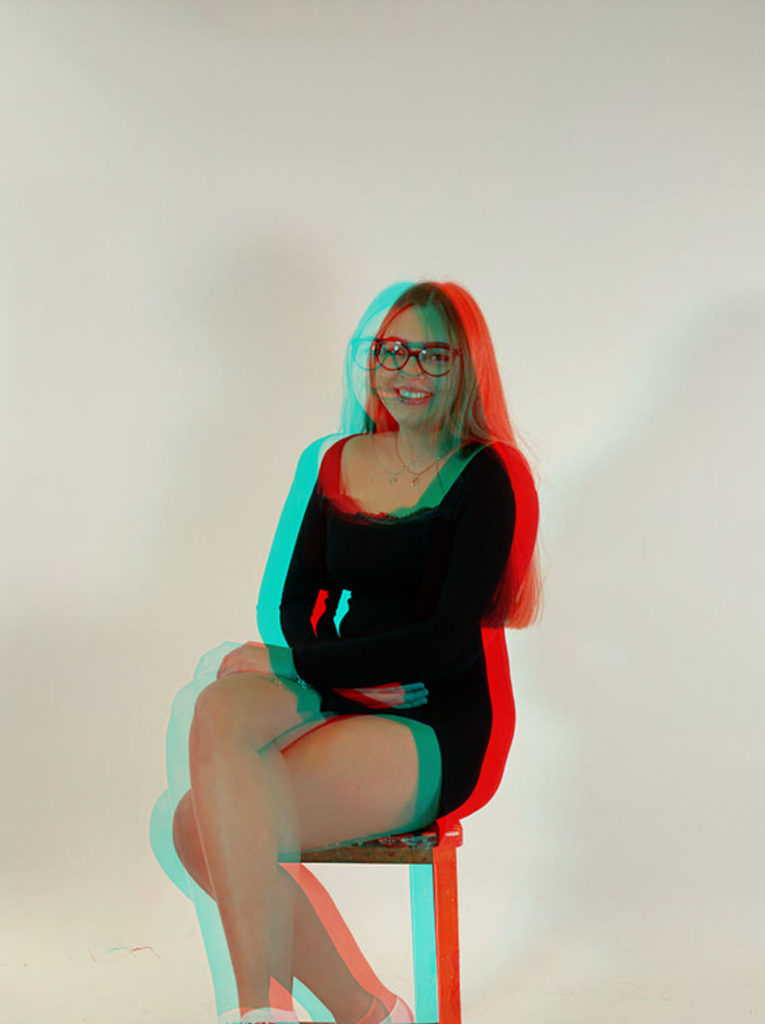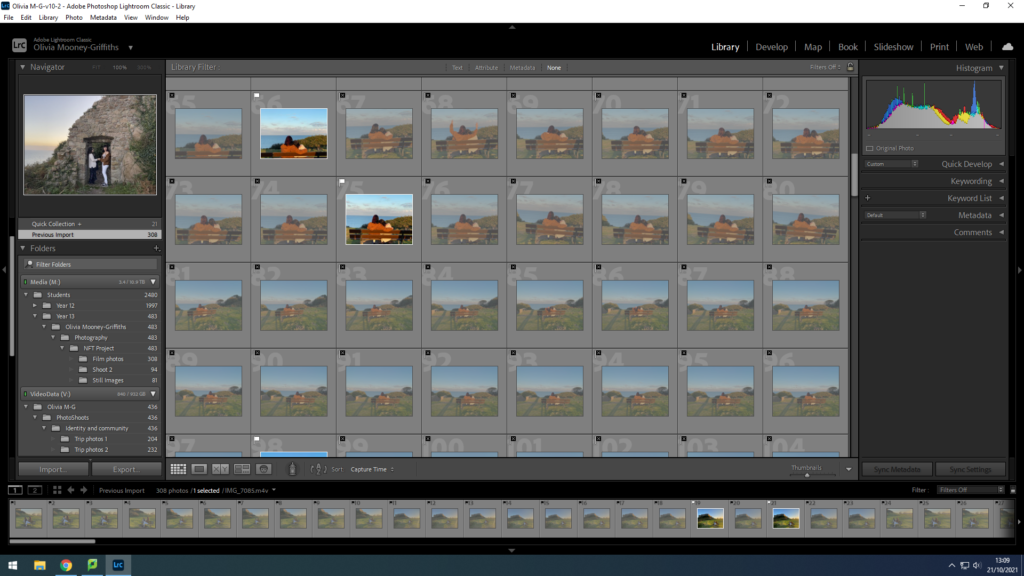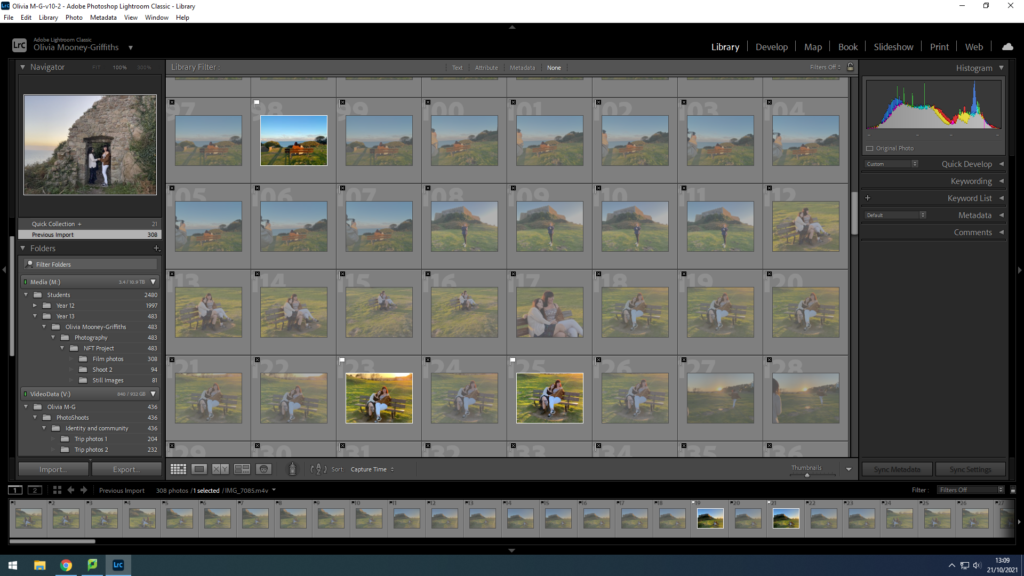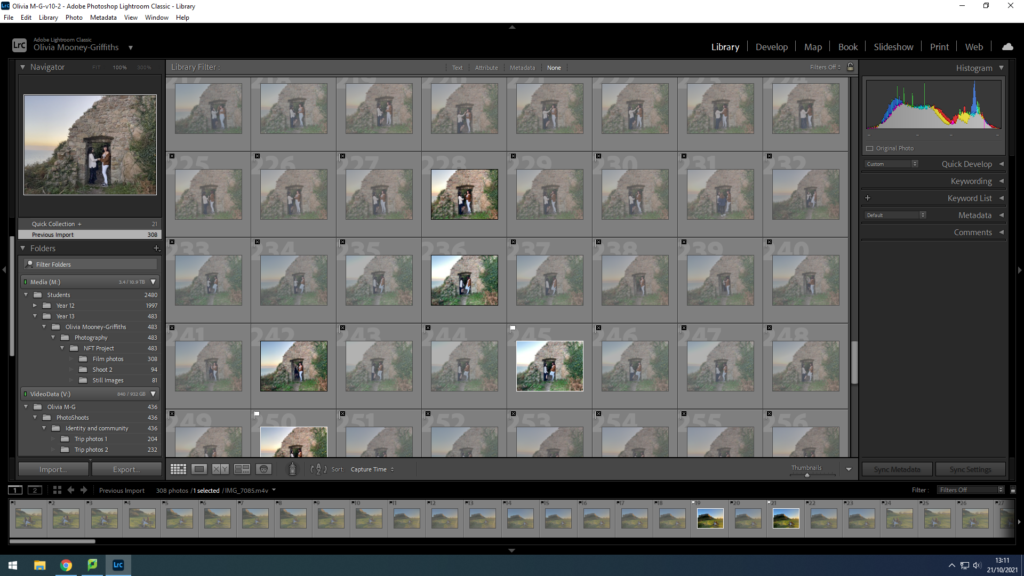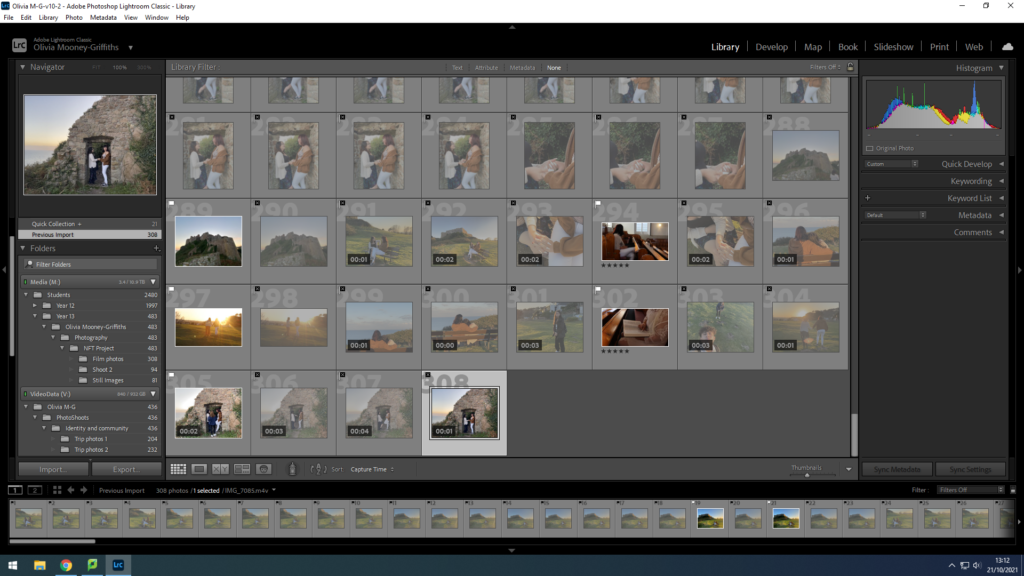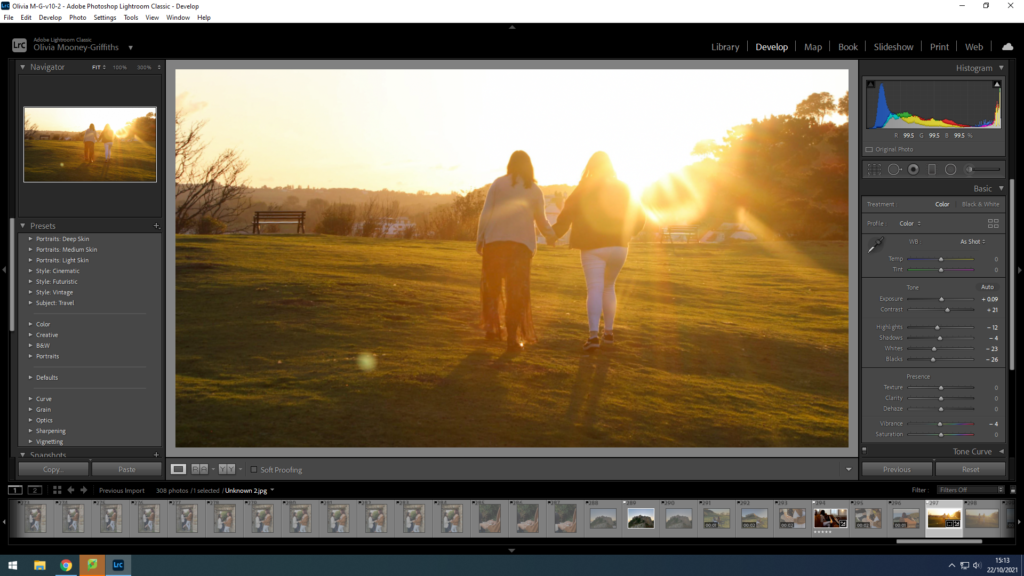Our initial idea being that the subject would walk through doors, transitioning from one time period to another did not work practically due to the layout of the house in which we were filming. Instead, we had her walking just from one frame to another across the screen which actually created smooth transitions.
To start with, we picked out the three most successful videos which were about ten seconds each and cut them down in order to create the smooth transitions we hoped for. These clips were placed together and we started from there.
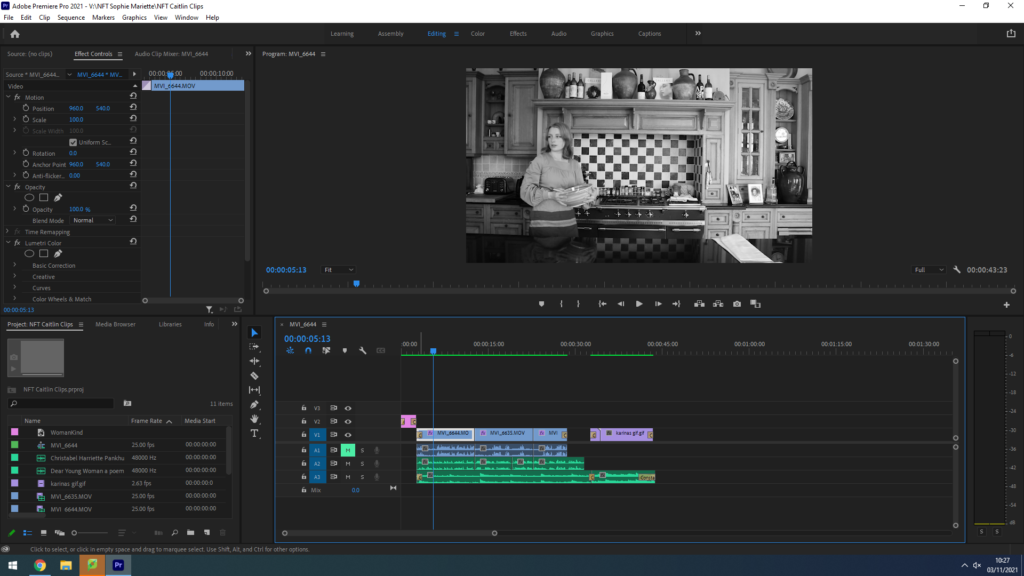
The first clip consists of our subject, Caitlin, with a bowl and a whisk. She walks towards the centre, puts the bowl down and picks up a suffragette sash and puts it on, then walks off and into the next scene. We chose to make this clip black and white to reference the time period as much as possible. In the background there is empowering music playing as well as a separate quote for each clip being spoken by a women of the time about women. For this particular scene, a women reads ‘the ministers suffragettes who form the women’s social and political union are engaged to meet him to win the right to vote for women of this century’

We are then led to the second scene, where the colours are dull but not fully black and white. In these scene, Caitlin walks into the scene, puts on a jacket and proceeds to pick up a woman’s rights- she then pauses, takes a breath and marches on into the next scene. The short quote that is played in this scene reads… ‘We now have ten million women backing this particular measure before congress, that’s ten million women who are united through their organisation.’
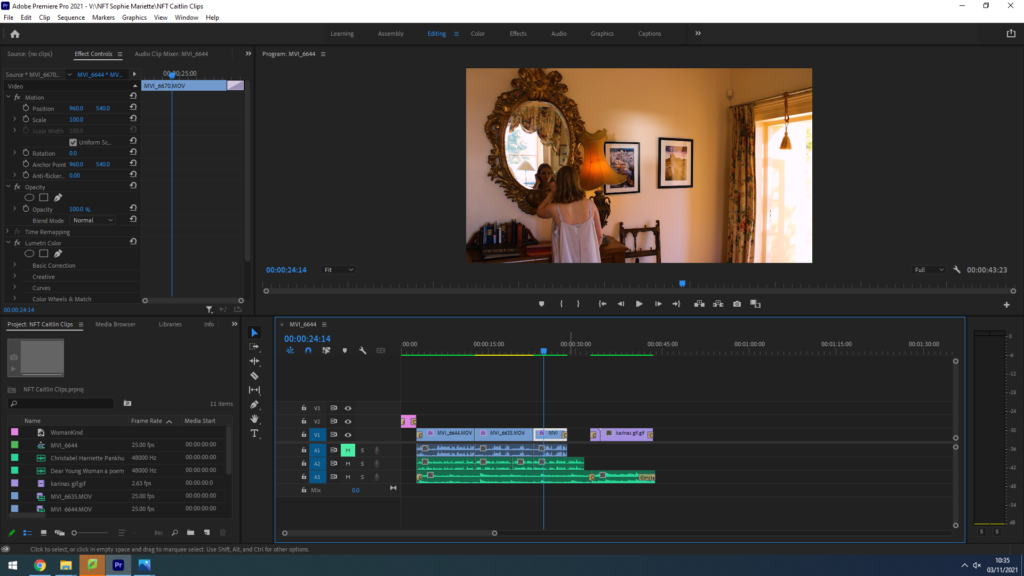
In the last scene, she is happy and ‘bouncy’. She walks in, looks at herself in the mirror, turns around and smiles at the camera, then exits. The quote playing is, ‘Whatever you’re going through as a woman, you have the choice to make for yourself for how gentle and kind you are with yourself.’
We also gathered images on the internet of womens protests, and played them through at a fast pace at the end of the video to send a powerful message.
The title we chose is ‘WomanKind’, which is a play on words referring to ‘mankind.’


